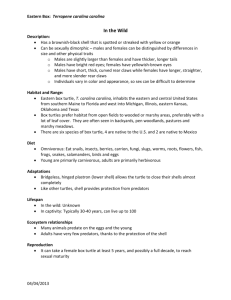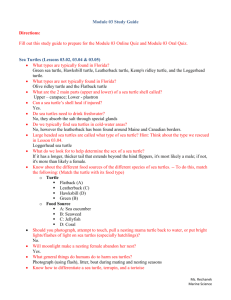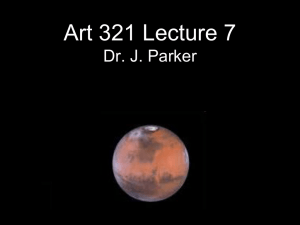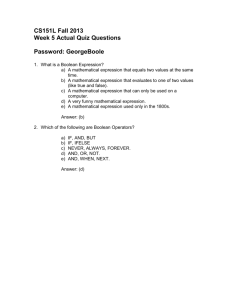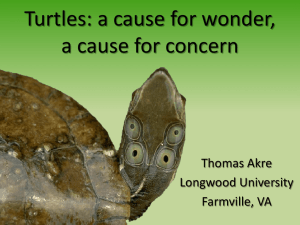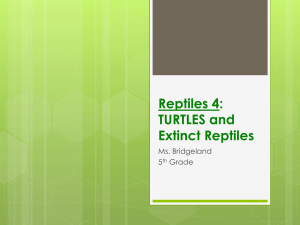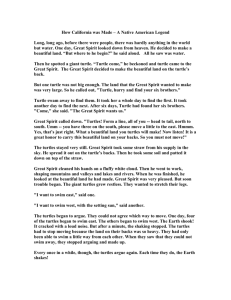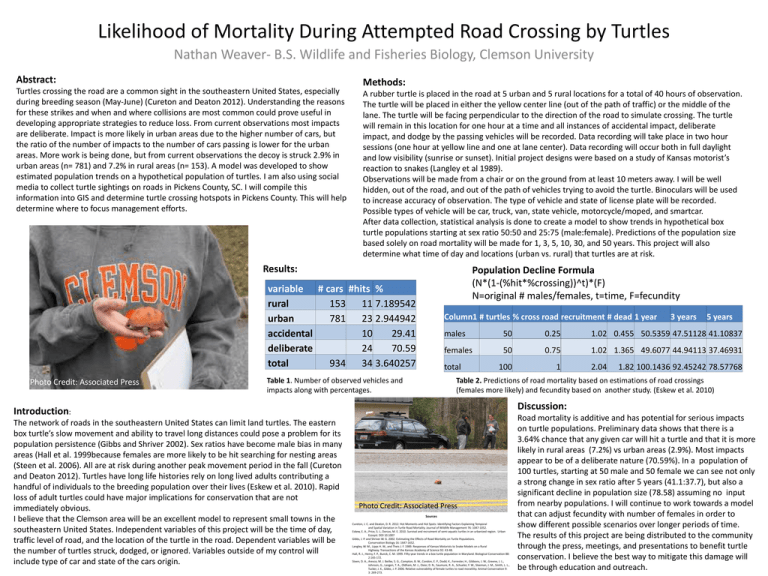
Likelihood of Mortality During Attempted Road Crossing by Turtles
Nathan Weaver- B.S. Wildlife and Fisheries Biology, Clemson University
Abstract:
Turtles crossing the road are a common sight in the southeastern United States, especially
during breeding season (May-June) (Cureton and Deaton 2012). Understanding the reasons
for these strikes and when and where collisions are most common could prove useful in
developing appropriate strategies to reduce loss. From current observations most impacts
are deliberate. Impact is more likely in urban areas due to the higher number of cars, but
the ratio of the number of impacts to the number of cars passing is lower for the urban
areas. More work is being done, but from current observations the decoy is struck 2.9% in
urban areas (n= 781) and 7.2% in rural areas (n= 153). A model was developed to show
estimated population trends on a hypothetical population of turtles. I am also using social
media to collect turtle sightings on roads in Pickens County, SC. I will compile this
information into GIS and determine turtle crossing hotspots in Pickens County. This will help
determine where to focus management efforts.
Methods:
A rubber turtle is placed in the road at 5 urban and 5 rural locations for a total of 40 hours of observation.
The turtle will be placed in either the yellow center line (out of the path of traffic) or the middle of the
lane. The turtle will be facing perpendicular to the direction of the road to simulate crossing. The turtle
will remain in this location for one hour at a time and all instances of accidental impact, deliberate
impact, and dodge by the passing vehicles will be recorded. Data recording will take place in two hour
sessions (one hour at yellow line and one at lane center). Data recording will occur both in full daylight
and low visibility (sunrise or sunset). Initial project designs were based on a study of Kansas motorist’s
reaction to snakes (Langley et al 1989).
Observations will be made from a chair or on the ground from at least 10 meters away. I will be well
hidden, out of the road, and out of the path of vehicles trying to avoid the turtle. Binoculars will be used
to increase accuracy of observation. The type of vehicle and state of license plate will be recorded.
Possible types of vehicle will be car, truck, van, state vehicle, motorcycle/moped, and smartcar.
After data collection, statistical analysis is done to create a model to show trends in hypothetical box
turtle populations starting at sex ratio 50:50 and 25:75 (male:female). Predictions of the population size
based solely on road mortality will be made for 1, 3, 5, 10, 30, and 50 years. This project will also
determine what time of day and locations (urban vs. rural) that turtles are at risk.
Results:
Population Decline Formula
(N*(1-(%hit*%crossing))^t)*(F)
N=original # males/females, t=time, F=fecundity
variable # cars #hits %
rural
153 11 7.189542
urban
781 23 2.944942
accidental
10
29.41
deliberate
24
70.59
total
934 34 3.640257
Photo Credit: Associated Press
Column1 # turtles % cross road recruitment # dead 1 year
50
0.25
1.02 0.455 50.5359 47.51128 41.10837
females
50
0.75
1.02 1.365 49.6077 44.94113 37.46931
100
1
2.04
1.82 100.1436 92.45242 78.57768
Table 2. Predictions of road mortality based on estimations of road crossings
(females more likely) and fecundity based on another study. (Eskew et al. 2010)
Discussion:
Introduction:
The network of roads in the southeastern United States can limit land turtles. The eastern
box turtle’s slow movement and ability to travel long distances could pose a problem for its
population persistence (Gibbs and Shriver 2002). Sex ratios have become male bias in many
areas (Hall et al. 1999because females are more likely to be hit searching for nesting areas
(Steen et al. 2006). All are at risk during another peak movement period in the fall (Cureton
and Deaton 2012). Turtles have long life histories rely on long lived adults contributing a
handful of individuals to the breeding population over their lives (Eskew et al. 2010). Rapid
loss of adult turtles could have major implications for conservation that are not
immediately obvious.
I believe that the Clemson area will be an excellent model to represent small towns in the
southeastern United States. Independent variables of this project will be the time of day,
traffic level of road, and the location of the turtle in the road. Dependent variables will be
the number of turtles struck, dodged, or ignored. Variables outside of my control will
include type of car and state of the cars origin.
5 years
males
total
Table 1. Number of observed vehicles and
impacts along with percentages.
3 years
Photo Credit: Associated Press
Sources
Cureton, J. C. and Deaton, D. R. 2012. Hot Moments and Hot Spots: Identifying Factors Explaining Temporal
and Spatial Variation in Turtle Road Mortality. Journal of Wildlife Management 76: 1047-1052.
Eskew, E. A., Price, S. J., Dorcas, M. E. 2010. Survival and recruiment of semi-aquatic turtles in an urbanized region. Urban
Ecosyst. DOI 10.1007
Gibbs, J. P. and Shriver W. G. 2002. Estimating the Effects of Road Mortality on Turtle Populations.
Conservation Biology 16: 1647-1652.
Langley, W. M., Lipps H. W., and Theis J. F. 1989. Responses of Kansas Motorists to Snake Models on a Rural
Highway. Transactions of the Kansas Academy of Science 92: 43-48.
Hall, R. J., Henry, F. P., Bunck, C. M. 1999. Fifty-year trends in a box turtle population in Maryland. Biological Conservation 88:
2:165-172.
Steen, D. A., Aresco, M. J. Beilke, S. G., Compton, B. W., Condon, E. P., Dodd, K., Forrester, H., Gibbons, J. W., Greene, J. L.,
Johnson, G., Langen, T. A., Oldham, M. J., Oxier, D. N., Saumure, R. A., Schueler, F. W., Sleeman, J. M., Smith, L. L.,
Tucker, J. K., Gibbs, J. P. 2006. Relative vulnerability of female turtles to road moratility. Animal Conservation 9:
3: 269-273.
Road mortality is additive and has potential for serious impacts
on turtle populations. Preliminary data shows that there is a
3.64% chance that any given car will hit a turtle and that it is more
likely in rural areas (7.2%) vs urban areas (2.9%). Most impacts
appear to be of a deliberate nature (70.59%). In a population of
100 turtles, starting at 50 male and 50 female we can see not only
a strong change in sex ratio after 5 years (41.1:37.7), but also a
significant decline in population size (78.58) assuming no input
from nearby populations. I will continue to work towards a model
that can adjust fecundity with number of females in order to
show different possible scenarios over longer periods of time.
The results of this project are being distributed to the community
through the press, meetings, and presentations to benefit turtle
conservation. I believe the best way to mitigate this damage will
be through education and outreach.




